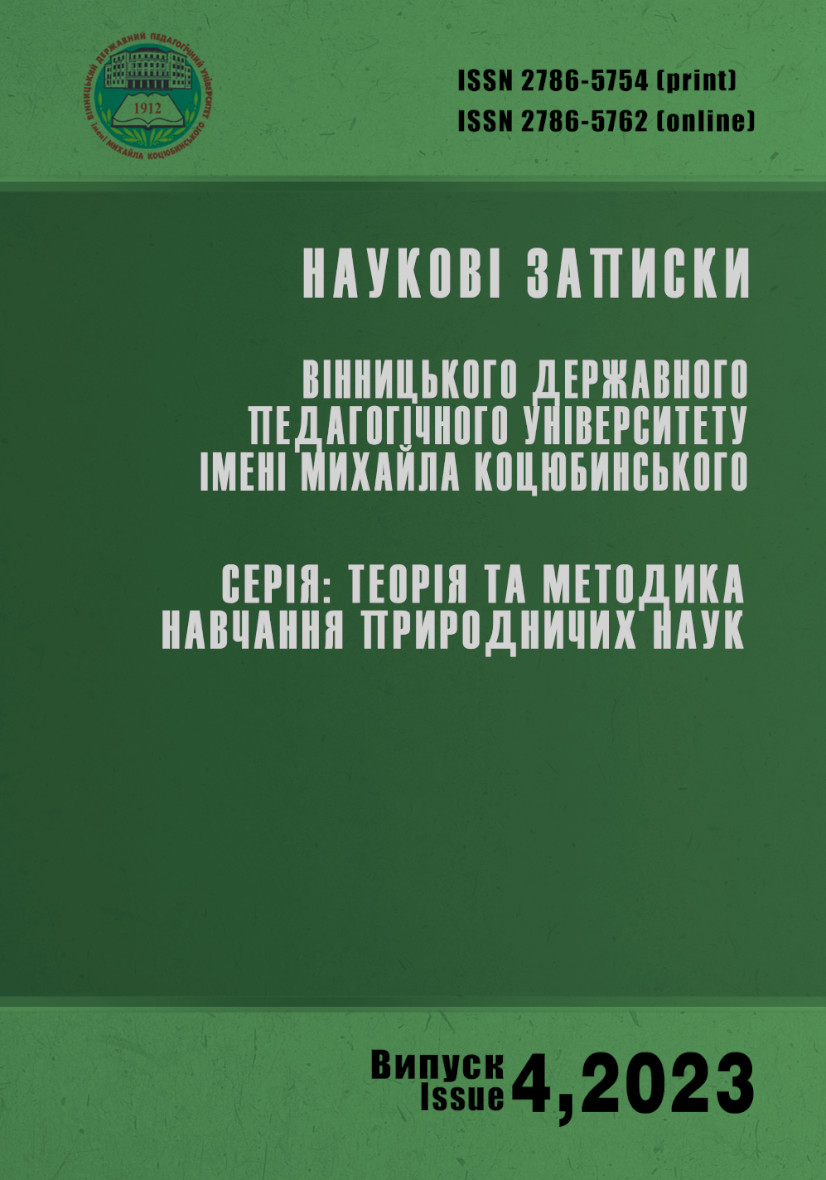Abstract
The article analyzes literary sources in relation to the main directions of changes in chemical education and the possibility of adopting the European and world experience in teaching and learning chemistry. As educational perspectives, it is suggested: to change the approaches to teaching and learning chemistry with the aim of implementing the acquired knowledge and skills in various spheres of life and professional activity; combine knowledge from various natural sciences obtained at all educational stages and connect them to the tasks considered by higher chemical education; to recognize the work of a chemistry teacher as a science-based profession that is constantly developing and modernizing.
The paper considers the appropriateness of using the BACON online platform, the Backside Attack smartphone application, the QR Chem program, virtual reality (VR) and augmented reality (AR) technologies, 2D and 3D printing technologies as innovative means of teaching chemistry. An example of adapting material from a YouTube channel for educational purposes is given and the feasibility of creating a chemical YouTube channel is explained.
Analyzing the literature, it can be noted that the use of modern approaches, methods, means of teaching and learning chemistry leads to the formation of personal skills in students. Students will be able to implement the experience gained during their studies use and profession, and will be able to improve it throughout life. The education of interdisciplinary, qualified, creative specialists with systemic and critical thinking, as well as modern teachers focused on students to the maximum, is the expected result of innovations in chemical education.
The identified innovative approaches will be useful in teaching and learning university courses (general and inorganic chemistry, colloidal chemistry, medical chemistry, physical chemistry, organic chemistry, chemical materials science, modern chemical performance, and others).
References
Eilksa I., Byersb B. The need for innovative methods of teaching and learning chemistry in higher education – reflections from a project of the European Chemistry Thematic Network. Chem. Educ. Res. Pract. 2010. Vol. 11. P. 233–240.
Pazicni S., Flynn A. B. Systems thinking in chemistry education: theoretical challenges and opportunities. J. Chem. Educ. 2019. Vol. 96, No 12. P. 2752–2763.
Hofstein A. The laboratory in chemistry education: thirty years of experience with developments, implementations and research. Chem. Educ. Res. Pract. 2004. Vol. 5, No. 3. P. 247–264.
George-Williams S. R., Ziebell A. L., Thompson C. D., Overton T. L. What do you think the aims of doing a practical chemistry course are?‘ A comparison of the views of students and teaching staff across three universities. Chem. Educ. Res. Pract. 2018. Vol. 19. P463–473.
Taber K. S. Building the structural concepts of chemistry: some considerations from educational research chemistry educations. Research and Practice in Europe. 2001. Vol. 2, No 2. P. 123–158.
Semmlera L., Pietzne V. Creativity in chemistry class and in general – German student teachers‘ views Chem. Educ. Res. Pract. 2017. Vol. 18. P. 310–328.
Taber K. S. Learning generic skills through chemistry education (Editorial). Chem. Educ. Res. Pract. 2016. Vol. 17. P. 225–228.
Seery M.K. Flipped learning in higher education chemistry: emerging trends and potential directions. Chem. Educ. Res. Pract. 2015. Vol. 16. P. 758–768.
York S., Lavi R., Dori Y. J., Orgill M. K. Applications of Systems Thinking in STEM Education. J. Chem. Educ. 2019. Vol. 96, No 12. P. 2742–2751.
Ippoliti F. M., Charia J. V., Garg N. K. Advancing global chemical education through interactive teaching tools. Chem. Sci. 2022. Vol. 13. P. 5790–5796.
Ambrosi A., Rong R., Shia S., Webster R. D.3D-printing for electrolytic processes and electrochemical flow systems. J. Mater. Chem. 2020. Vol. 8. P. 21902–21929.
Ali N., Ullah S.Review to analyze and compare virtual chemistry laboratories for their use in education. J. Chem. Educ. 2020. Vol. 97, No 10. P. 3563–3574.
Blonder R., Jonatan M., Bar-Dov Z., Benny N., Rap S., Sakhnini S. Can You Tube it? Providing chemistry teachers with technological tools and enhancing their self-efficacy beliefs. Chem. Educ. Res. Pract. 2013. Vol. 14, P. 269–285.
García-Ortega A. R. H., Hernández-Ayala L. F., Guerrero-Ríos I., Gracia-Mora J., Reina M. CADMIO: creating and curating an educational YouTube Channel with chemistry videos J. Chem. Educ. 2021. Vol. 98, No 11. P. 3593–3599.
Bussey Th. J., Orgill M. K., Crippenb K. J. Variation theory: a theory of learning and a useful theoretical framework for chemical education research. Chem. Educ. Res. Pract. 2013. Vol. 14. P. 9–22.
Ghani B. A., Ibrahim N. H., Yahaya N. A., Surif J. Enhancing students‘ HOTS in laboratory educational activity by using concept map as an alternative assessment tool. Chem. Educ. Res. Pract. 2017. Vol. 18. P. 849–874.
Zoller U. Alternative assessment as (critical) means of facilitating HOCS-promoting teaching and learning in chemistry education. Research and Practice in Europe. 2001. Vol. 2, No 1. P. 9–17.
Tolppanen A. S., Akselab M., Eilks I. The potential of the non-formal educational sector for supporting chemistry learning and sustainability education for all students – a joint perspective from two cases in Finland and Germany. Chem. Educ. Res. Pract. 2017. Vol. 18. P. 13–25.
Popova M., Kraft A., Harshman J., Stains M. Changes in teaching beliefs of early-career chemistry faculty: a longitudinal investigation. Chem. Educ. Res. Pract. 2021. Vol. 22. P. 431–442.
Zimmermann F., Melle I., Huwer J. Developing prospective chemistry teachers‘ TPACK−A comparison between students of two different universities and expertise levels regarding their TPACK self-efficacy, attitude, and lesson planning competence. J. Chem. Educ. 2021. Vol. 98, No 6. P. 1863–1874.
Burmeister M., Schmidt-Jacob S., Eilks I. German chemistry teachers‘ understanding of sustainability and education for sustainable development – an interview case study. Chem. Educ. Res. Pract. 2013. Vol. 14. P. 169–176.
Talanquer V., Bucat R., Tasker R., Mahaffy P. G. Lessons from a pandemic: educating for complexity, change, uncertainty, vulnerability, and resilience. J. Chem. Educ. 2020. Vol. 97, No 9. P. 2696–2700.

This work is licensed under a Creative Commons Attribution 4.0 International License.
Copyright (c) 2023 Тетяна Денисенко, Надія Стець

